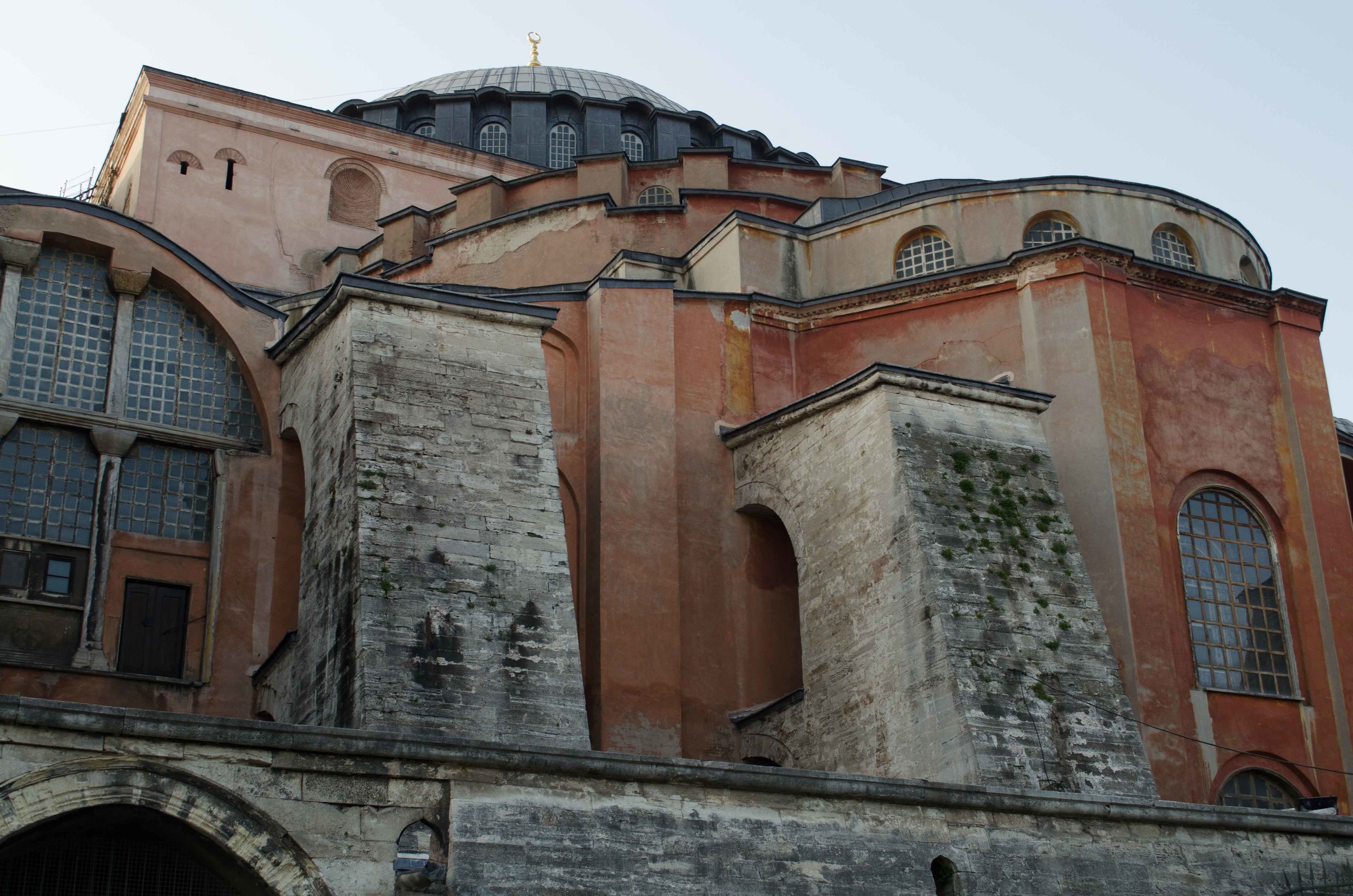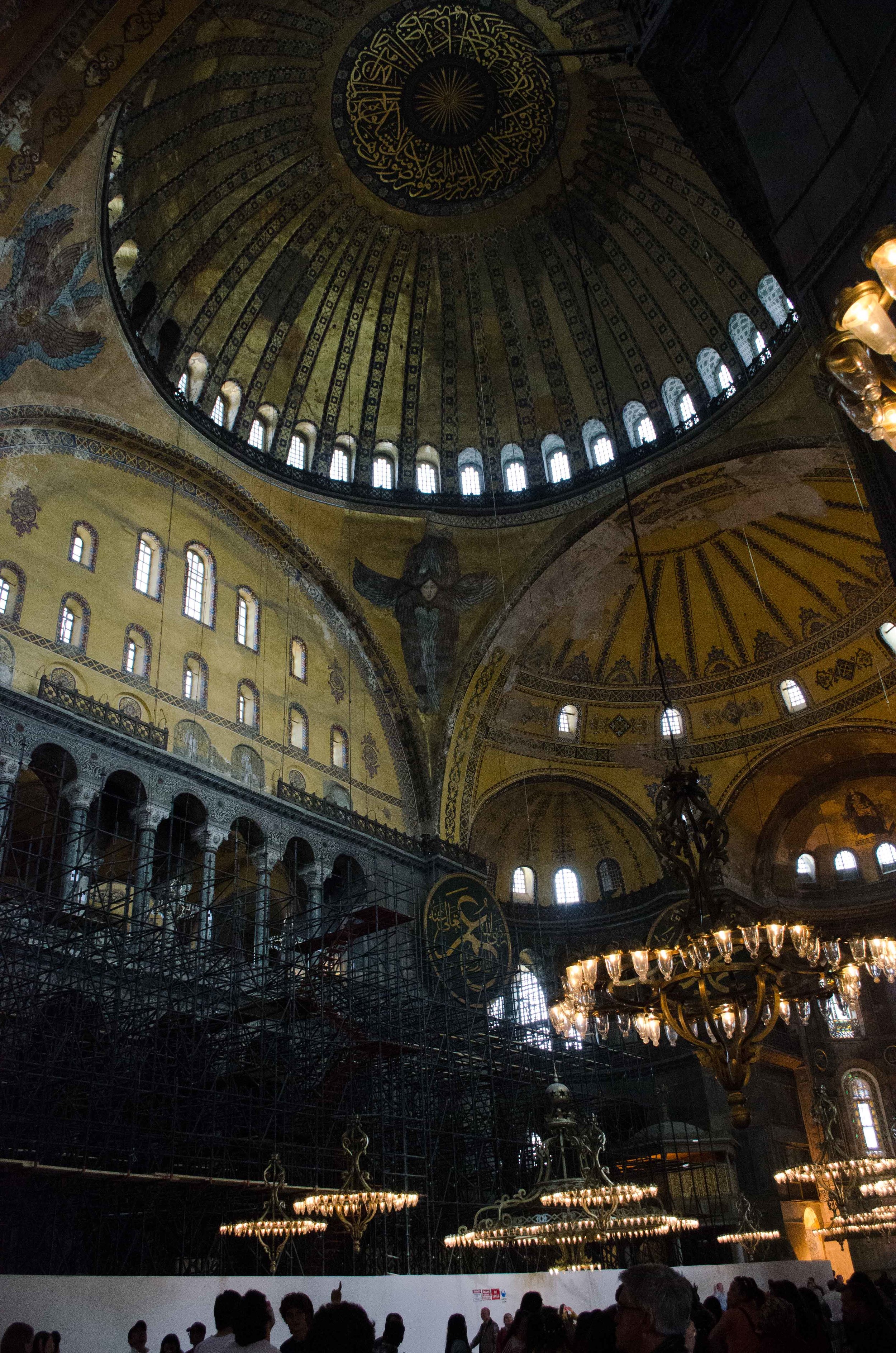Last weekend, I went to Istanbul (erstwhile Constantinople) I have been slow to post lately because of how overwhelming and, frankly, indescribable my experience in Istanbul was. It is a place that is different from anything else I’ve experienced. I’ve never been that far East, never been to a predominately Islamic country, even though Istanbul is relatively secular, and have never ever been in crowds of people quite like those I encountered last week. I am sure that once I spend time in China in May, I will in retrospect realize how similar Istanbul was to other places in/connected to Europe, but for now, my overwhelming impression is how Eastern it is (and though I did not go to Asia, one afternoon I could see it from my boat). I packed an incredible amount of things into three days: Topkapi palace, a boat ride on the Bosphorous, a trip to the Byzantine church of Chora, visits to the Blue Mosque and the Suleyman mosque, wandering around the city’s maze of streets, visiting the Grand Bazaar and the spice market, seeing the remnants of Constantinople and walking along the Theodosian Land walls. But of course the main thing I did, and the main reason that I seized the opportunity of living relatively close to Turkey, was to visit the Hagia Sophia. I suppose I made a pilgrimage of sorts there.
And it was worth it—it is an astounding, dazzling, and completely confounding building that reminded me forcibly of the power of space and place in religious and spiritual identity. Even though no longer a church (which it was for almost a thousand years—more if you count earlier buildings on the same spot) or a mosque (which it was for nearly 500 years), the air of spiritual devotion lingers palpably, and the space is charged with the energies generated by 1500 years of religious worship. Plus, it is unfathomably big.
Yet that’s not always apparent from the outside. I think what struck me most immediately was that even though it is a vast building, it has the same architectural effect as other, smaller, Byzantine churches like San Apollinaris in Ravenna—unassuming and oddly small-seeming from the outside (unlike, say, Gothic cathedrals) and surprisingly and suddenly vast on the inside.
Even from a distance, the building hunkers down; it feels like it is growing out of the ground slowly rather than leaping out.
Clearly, this is a big building, but on the outside, the closer you get, the easier it is to lose a sense of that. These are pictures of the entrance to the church—no sense of scale anymore.
Even upon entering, the enormity of the interior space is not immediate: unless you enter through the main imperial ceremonial doors. If you enter from the side (as most people would have), you still can’t fully sense what’s coming:
Then suddenly this vast space opens up and you can’t even SEE the top of the building at first. You really do just feel like you are in a vast outdoor space; then eventually you start to realize the miracle of the dome and the vibrance of all of the amazing details.
What bowled me over was that even though I realize it would have been much brighter originally (see this “restored” part) you realize how even glowing and sparkling and full of color, THAT would not have been overwhelming in the way that the smaller churches are. Instead, the giant size would have given the decorations (often truly overwhelming in Byzantine churches) an oddly muted and simpler feel. The space is simply so big, that you can’t take in anything but empty space at first—it’s only when you start poking around that you see the smaller things. I think, in fact, that what I will remember the most is the feeling of being in a big, clear, outdoor space, but knowing all the time it was built.
This building would be amazing in whatever context, but knowing that it was built (in five years!!!) in the sixth century, and is still (with interventions, of course) standing and powerful and so stunning is a poignant reminder of the vitality and creativity and vigor of people of the past; we are often so fixed on a sense of historical progress that we imagine we are the innovators, forgetting both that the spirit of innovation existed in the past and also that the innovations of the past can still evoke a sense of marvel today.







